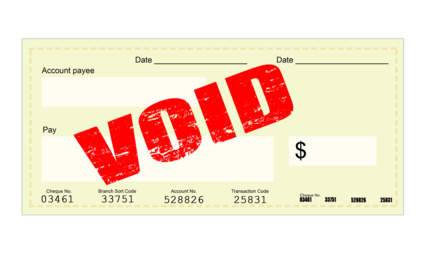What Is The Accounting Equations Formula? - The Full Guide
You may have heard of the accounting equation formula or the balance sheet equation but not really understood what these terms mean.
However it is essential to understand this basic accounting equation. So what is the accounting equation formula, how do you calculate it, and why is it important?
Also read: How To Prepare Your Accounts For New Hires

Understanding The Accounting Equation
The accounting equation is also known as the balance sheet equation or the basic accounting equation. It is the foundation of the double entry bookkeeping system. Double entry is where every transaction has an effect on a minimum of two accounts.
That is because this equation shows that the total assets of a company are equal to the sum of the liabilities and shareholders equity. This ensures that the balance sheet is balanced.
For this to happen each entry on the debit side of the balance sheet must have a corresponding entry on the credit side of the balance sheet. It is a fundamental principle of accounting.
The accounting equation is Assets = Liabilities + Shareholder’s Equity.
Also read: 12 Best Finance Podcasts For Your Savings
Assets
Typically the largest and most valuable assets that a business owns are its buildings, machinery, and equipment. These are known as fixed assets or capital assets and are normally held for many years.
Assets can be in the form of cash, cash equivalents, liquid assets or inventory. Liquid assets may be certificates of deposit or Treasury bills.
Cash equivalents are assets that can be converted into cash immediately. They can include marketable securities and bank accounts. However, they do not usually include stock holdings or equity as these are often subject to fluctuating value.
The amounts of money that are owed to a business are known as accounts receivable and are listed on the balance sheet as a current asset. This money is owed for goods delivered or services used which have not yet been paid for by the customer.
Liabilities
A company’s liabilities include its debts. Any type of debt is a liability whether it is a long term loan or a bill that needs to be paid, they are both obligations owed to others.
The costs that need to be paid to keep the business operating are also liabilities and can include rent, salaries, taxes, utilities and dividends payable. These types of liabilities are known as current liabilities as they are due within the year.
Long term liabilities such as loans are normally owed to lenders and can include notes payable and also unearned revenue. This latter liability refers to money owed to you for goods yet to be delivered or services yet to be used.
Also read: Why Pay Stubs Are Important At Tax Time
Shareholders Equity
The shareholder equity of a company represents its net or book value. It is calculated by subtracting the business’ liabilities from its assets, the resulting figure is the shareholder equity. This is the figure that is available to be distributed to shareholders.
If a company were to liquidate all of its assets and pay off all its liabilities then the amount of money that would be left would be the shareholders equity. It is one of the most important metrics for measuring the financial health of a business.
Shareholder equity includes retained earnings and share capital. Retained earnings is the sum of all earnings which were not paid to shareholders as dividends. It can be thought of as a company’s savings as it represents the money set aside for use in the future.
The Double-Entry System
The accounting equation formula is a concise expression of the more complex and multi-item balance sheet. This display of a company’s transactions is called a balance sheet as all transactions have to be represented in at least two accounts.
For example, if a business takes out a loan it will be represented on the balance sheet as an increase in assets as well as a loan liability. A company buying materials with cash will see an increase in inventory which is an asset but a decrease in cash capital which is another type of asset. As there are two accounts affected by each transaction the system is known as double entry bookkeeping.
This ensures that the accounting equation remains balanced. In other words the left side will always equal the right side.
Also read: How to Review Your Paychecks Before Filing Income Taxes
Accounting Equation Formula & Calculation
The accounting equation formula uses the elements present in the balance sheet. To use the formula you have to find the business’ total assets for the period in question. Then the total of all liabilities is calculated and the shareholders equity added to it.
The sum of total liabilities and shareholders equity will be equal to the total assets. This means the balance sheet is balanced and correct.
As an example consider a company that has $110 billion in total assets, $70 billion in total liabilities and $40 billion in total shareholders equity. The right side of the balance sheet is liabilities plus equity which equals $110 billion which matches the total assets amount.
Why Is The Accounting Equation Important?
The accounting equation reveals the relationship between the three essential elements of the balance sheet, assets, liabilities and equity. If all else is equal when a business’ equity increases its assets increase and vice versa.
Reducing liabilities will increase equity and adding liabilities will decrease equity. These concepts, while basic, are vital to modern accounting processes.
But are there limits to the accounting equation? While the balance sheet should always be balanced it cannot always give an accurate picture of the performance of a business. The information on the balance sheet needs to be interpreted by investors.
Some companies may have too many liabilities or not enough assets. This is not something that the accounting equation can determine. Its function is to balance not to interpret.

Final Thoughts
The accounting equation formula is vitally important to the basic accounting methods used in most businesses and companies.
It is a concise summation of the company’s balance sheet but should be used as just that and not as an interpretation of a company’s financial health.
Our pay stub maker is a simple way to generate pay stubs online and it is very user friendly.
Also read: Why do Jobs Hold Your First Paycheck?















